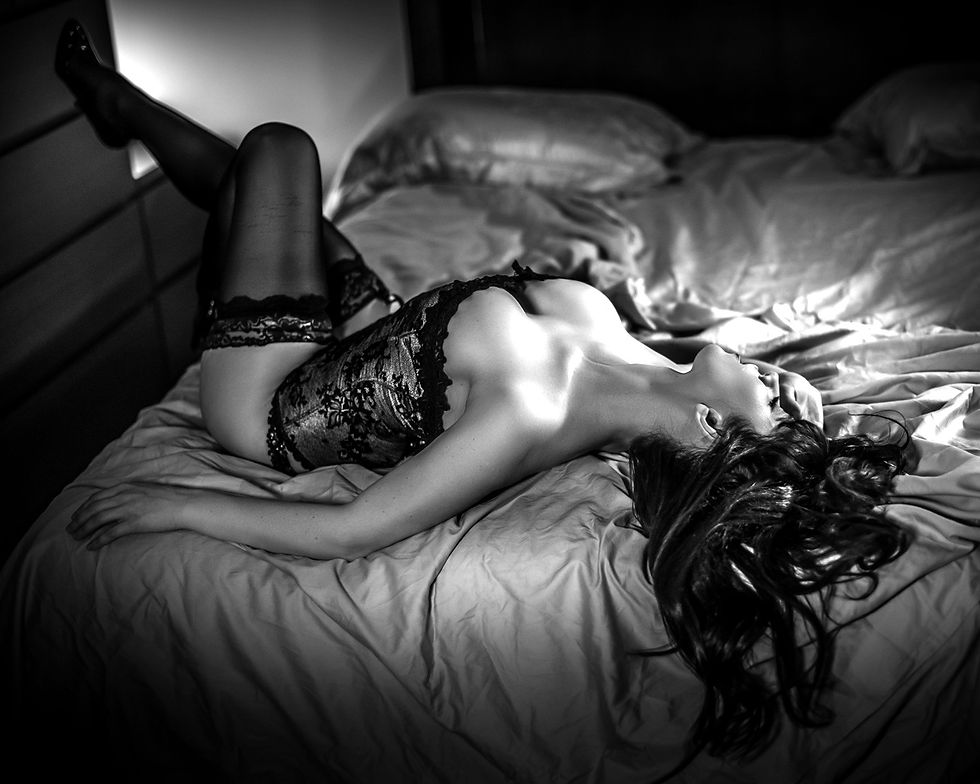Vegas Boudoir Blog- Seeing Light, Creating Mood (part 2: Artificial Light)
- Michael Spatola

- Mar 31, 2020
- 3 min read
Updated: May 11

In Part 1, we discussed using natural light, and how to manipulate it to produce beautiful results. Now, in part 2 we'll talk about using artificial light to produce light that the eye and mind accept as available light situations. Available light, means light that is already there in the set or location.
First, let's talk about the image above. This was shot in a hotel room, at night, with only the nightstand reading lights. Because they were on positionable goosenecks, I was able to create a dramatic studio lighting effect without any equipment at all.
Now let's talk about the images that follow. All were created with some form of artificial lighting that is just outside the camera's frame.
Like the previously, all images in this post are black and white so you can see the light and shadow.
These first images are bedroom images that seem to be lit with available room lighting. But the truth is, that the real lighting came from strobes just outside of the frame. I used the direction of the room lights as an example to where to place the strobes.





This next set of images were taken outdoors, or on location. Again, artificial lights or strobes were used to simulate light coming from the sources in, and just out of, frame to achieve a look like it just lit in existing light.





The above examples clearly show that once you have the ability to see the light, and the ability to simulate it that light, you can create images that most people will accept as the real thing.
Depending on how well, these first 2 are received, I may do a "part 3" on dramatic studio lighting too!
Is it time for you to have a session created? Drop me an email with your number and good time to call, and we'll set it up!

Michael Spatola, specializing in Boudoir Portraiture for over 30 years, has recently moved home and business to Las Vegas (Summerlin). Boudoir photography, and helping women to feel comfortable in their sessions, is his passion. A passion that shows in the images he creates! For the last 4 years in a row, he's been voted in the Top 10 Boudoir Photographers in L.A. (and looking to make that list in Vegas!)
He's also a multi EMMY Award Nominee for "Outstanding Individual Achievement in Makeup" and, has authored 6 books on Makeup and Special Makeup Effects.
#lasvegasboudoirstudio, #vegasboudoir, #lasvegasboudoirphotography, #vegasphotographer, #doitforyourself, #summerlinboudoir



Comments